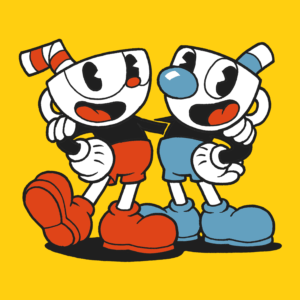
Run ‘n Gun Re-animated
Originally released for the XBOX One and PC in 2017, Cuphead came to the Switch April 19th with a solid port. Created by StudioMDHR, the indie game studio founded by the Moldenhauer brothers and their family and friends, Cuphead is a love letter to old-school gaming and even “older school” cartoons. The result is a game that’s equally a visual delight and a grueling challenge.
The story of Cuphead and his brother Mugman fits right into the world of those old cartoons. Our heroes go gambling in the Devil’s casino and when they go bust, they make a Devil’s bargain… become hit men, taking out a score of cartoon creatures to balance the books. Elder Kettle arms the boys with rapid-fire magic and they’ll unlock alternate fire modes, game-changing charms, and ultimate power attacks. Our heroes travel through danger to collect gold coins and fight bosses with looney-tunes transformations providing the variety of play – there are even flying Shoot ‘Em Up sequences. In a unique variation on the double-jump, they swat at pink-hued objects while in mid-air, propelling them higher, and adding a boost to charging supers. Slapping becomes an important skill as the game goes on, so I took the time to repeat a few levels and practice knocking bugs and bullets out of the air.
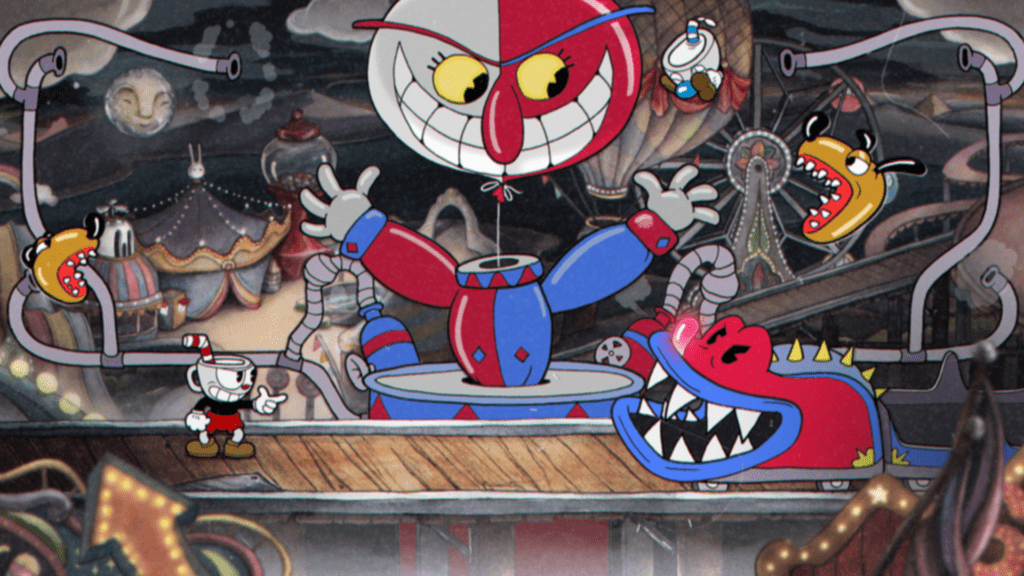
Full of weird and creepy themes and characters, it’s a great match for the surreal cartoon stories like Oswald, the Lucky Rabbit and the Pleasure Island sequence from Pinocchio, as Cuphead and Mugman go from riverboat saloon to carnival grounds, beehive high rise, stormy seas, and eventually back to the Devil’s casino. This brings up a troubling complication with Cuphead. In many of the early animated films the game takes inspiration from, racism and stereotyping were commonplace. StudioMDHR avoids some pitfalls, but the pyramid sequence raises eyebrows; a Djinn floats over the Egyptian desert, flinging mummified cats and scimitars. A rat named Werman gloats in a German accent when he destroys the brothers. Though there seems no ill intent within these sequences, more attention could have been paid to improve what they represent, and how.
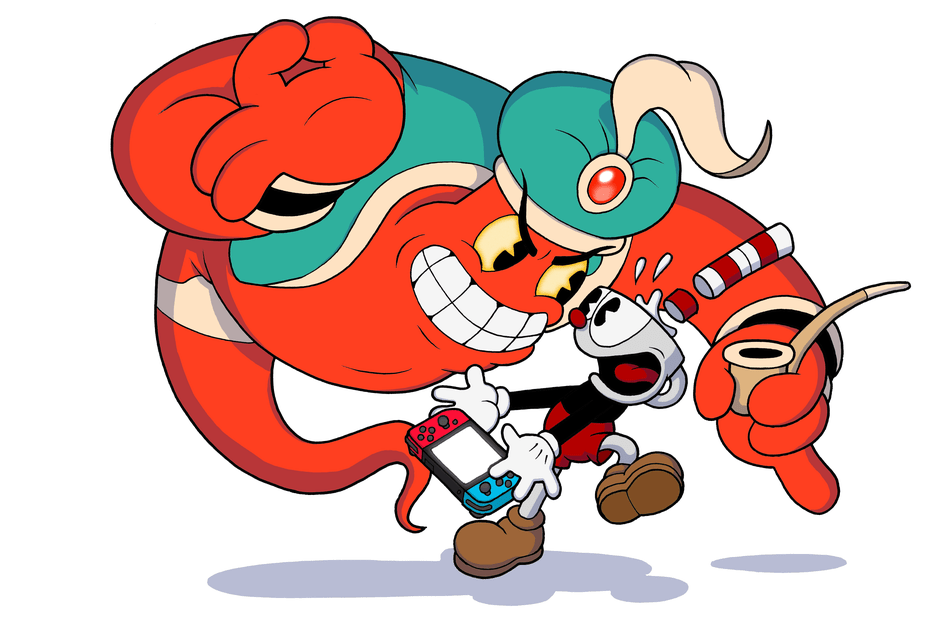
The charm of Cuphead is in its characters and animations, which drip with personality. Stretchy anatomy and Tex Avery inspired expressions carry the larger-than-life actions, while giving characters their distinct attitudes. Cuphead will tighten his belt while Mugman takes a swig of milk to start off the levels. Victory is celebrated by raising their heads, pinkies out, in a toast to your win. Enemy character gestures are big and bold, telegraphing their attacks even in hand-held mode. More subtle indicators would be lost on the small screen, so the overdone windup to a punch is important for gameplay and characterization.
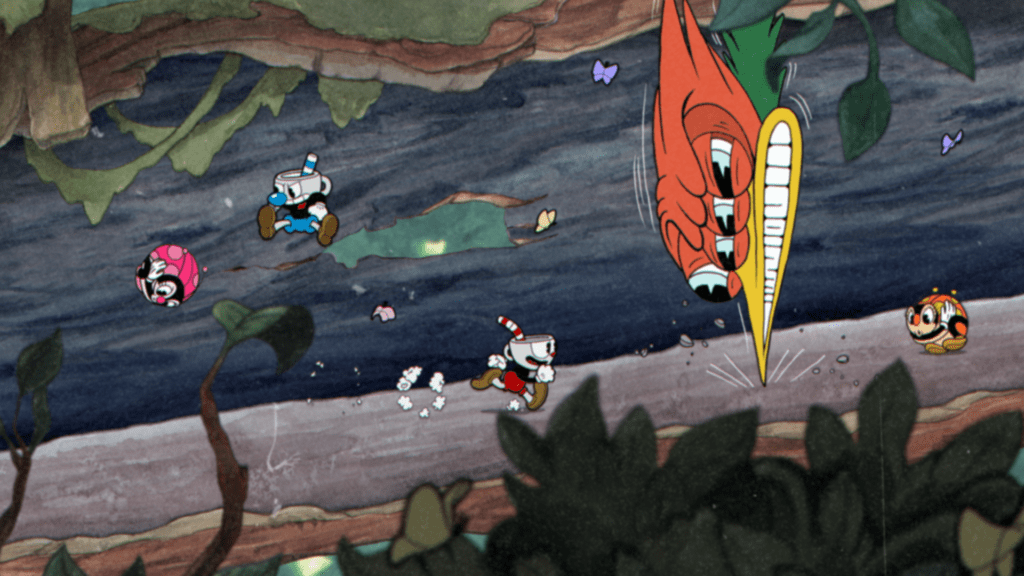
Playing in docked mode on the big screen lets you see all the care that went into hand painting the backgrounds, crafting a rotating model tower for the horizon of a flying level, and adding dust and scratch film filters. I didn’t recognize any significant difference in performance, and screen and frames stayed smooth and steady, an absolute necessity for a game like this.
The music is a standout, with ragtime piano and ballads giving way to rollicking jazz band tunes as the action picks up. Even if you never play the game, or can’t get far enough along to hear the tunes from later levels, I recommend you find the soundtrack and give it a listen for some period music with video game flair.
Cuphead released into an ongoing debate in the world of games media over difficulty and accessibility. Unfortunately, that conversation was quickly overtaken by the usual anti-Games Journalism rhetoric, as various personalities pushed agendas. The game was ultimately praised for its uncompromising difficulty, though it’s worth noting that when a designer commits to a high level of difficulty, they are also limiting the audience that can play (and will buy) the game.
Cuphead can suffer three hits before dying and needing to start the level from the beginning, like the default number of lives from Contra, though there’s no Konami code. There’s no load time to speak of, and this answered my biggest worry about the port from the more powerful Microsoft platforms. Having to endure a long load time after each loss would ruin Cuphead. Beating a level takes a few minutes, it’s the repeated attempts that take up the hours, so it’s actually well suited to on-the-go play. Have a minute or two? Make another attempt on that tricky boss monster. I settled into a cycle of attack, die, attack again, probing further into each stage until I knew it, front to back. The experience is similar to the puzzle platformer Super Meat Boy that leads you to slip into a flow state, provided you can keep your nerve.
Co-op play is local only, which is sensible, considering that input lag would cause more than a fair share of deaths. Having a partner along increases the damage that opponents can survive and adds a lot of visual “noise.” Sometimes both Cuphead and Mugman need to be at the same spot on screen, which can be confusing. Dividing enemy attention is welcome, and a companion can keep me alive longer. When Cup’ or Mug’ get smashed, a ghost floats up from the place of their demise. If the other player can get to it in time, they can restore a hit point and allow their friend to fight on.
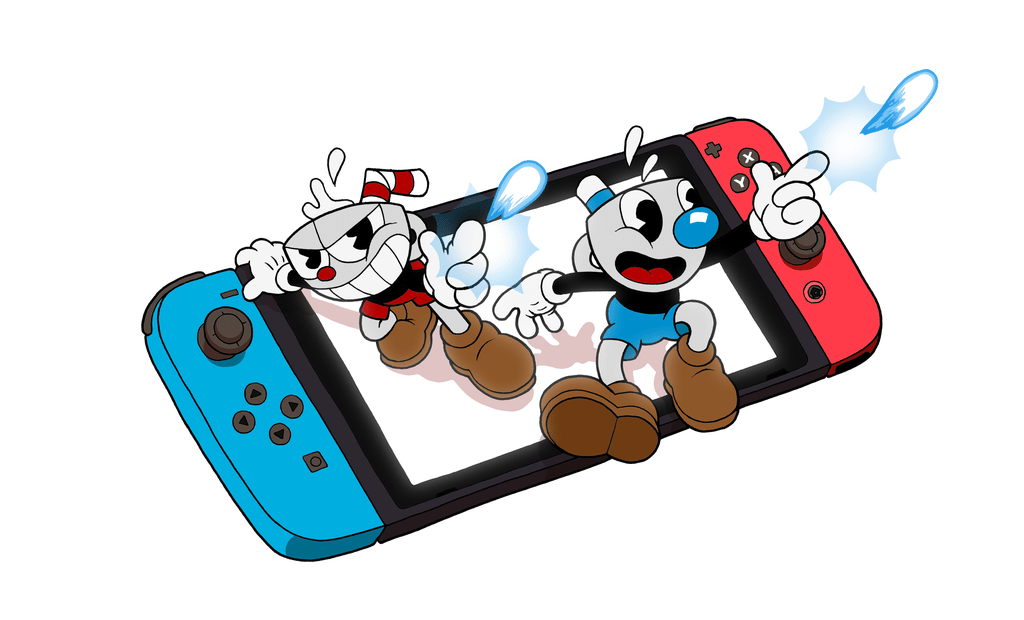
If you’re eager for the challenge, and can overlook a few awkward moments, I can recommend adding Cuphead to your Switch library. I’ll grade it a B+. Visuals and audio are top-notch, and the retro gameplay is strong and snappy. It could be made better with more accessibility options.
Game software was purchased by the reviewer. Images from the official press kit.
References: Metacritic StudioMDHR
Further reading: Cuphead and the Racist Spectre of Fleischer Animation, Cuphead Reignites the “Game Journalists Should Be Good at Games” Debate
